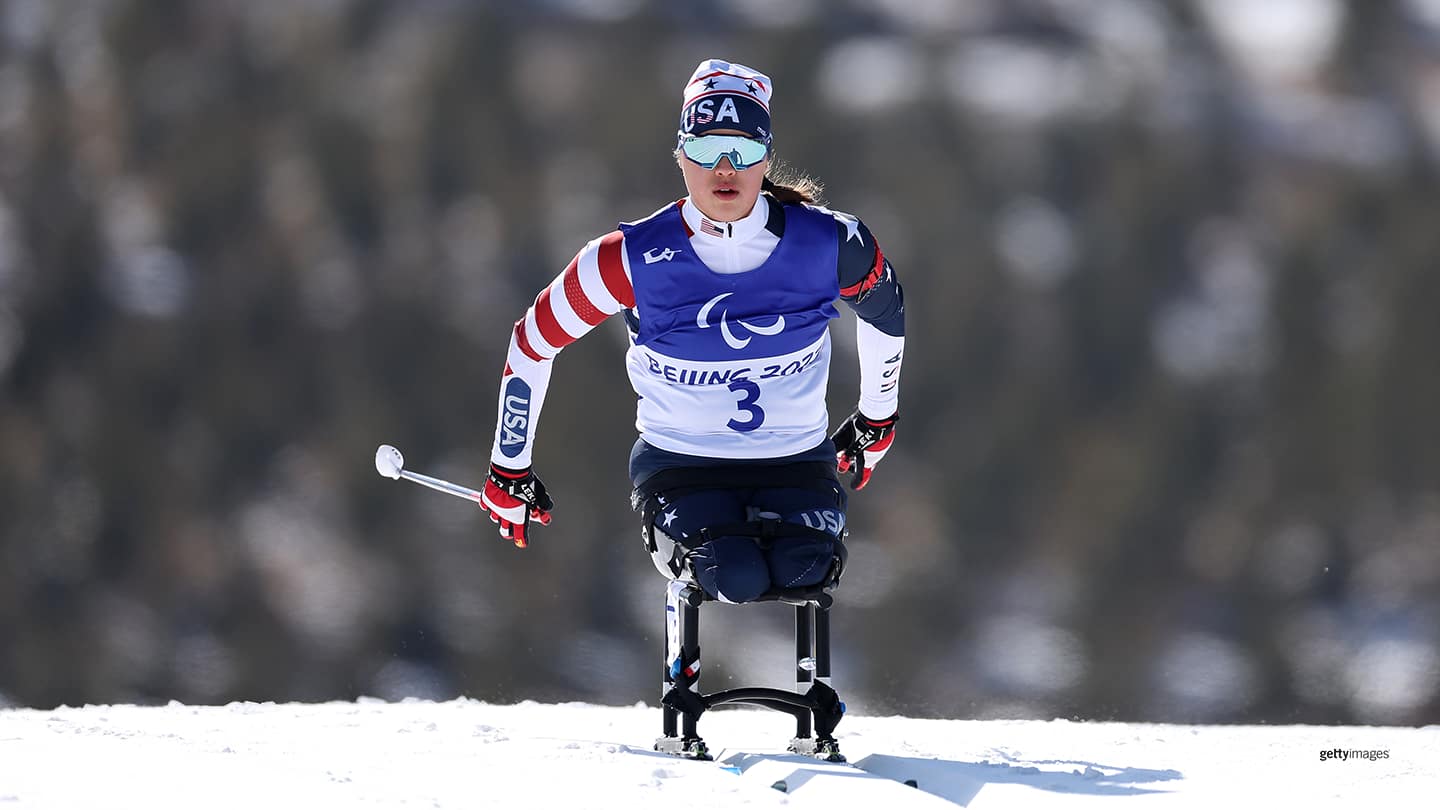
Going From Sled To Skis Isn’t As Easy As Lera Doederlein, Josh Sweeney Make It Look
by Bob Reinert

Josh Sweeney competes during the Para cross-country at the Paralympic Winter Games Beijing 2022 on March 6, 2022 in Zhangjiakou, China.
At first glance, the transition looks almost natural.
A sled hockey player propels themselves across the ice using metal picks at the ends of two short hockey sticks, while a Nordic sit skier uses poles to push forward over the snow with a roughly similar motion.
And to some extent, that’s true.
Josh Sweeney won a Paralympic gold medal in sled hockey at the Paralympic Winter Games Sochi 2014, then turned to Nordic skiing in recent years because of family commitments. The transition proved to be a natural fit for a couple reasons, he told USA Hockey last year, including because hockey and skiing used “a lot of the same motion, and a lot of the same muscles.”
Make no mistake, though, when Sweeney and fellow two-sport standout Lera Doederlein race this week at the Para Nordic skiing world cup in Soldier Hollow, Utah, the transition isn’t as easy as they make it look.
“The mechanics look the same, you know?” said Doederlein, a 19-year-old who is a Paralympian in skiing and member of the U.S. Women’s Development Sled Hockey Team. “You’re sitting in a bucket, and you have two poles. But when you dial in on it and you’ve trained for a while in it, like I have in both sports, you start to notice a lot of different things.”
Sweeney, a retired Marine who was injured in Afghanistan, took up the sport later in life. Now at age 35, his sole athletic focus is Nordic skiing. Doederlein continues to compete in both sports, and last August she skated with the U.S. women’s sled hockey team in the inaugural Women’s World Challenge, where they won the gold medal.
Coming off the Paralympic year, fewer Americans competed internationally in Para Nordic skiing this season, and the U.S. sent a smaller team of six athletes and one guide to the world championships in January in Sweden. For Doederlein, Sweeney and others who didn’t compete in Sweden, the Utah world cup that runs through March 8 marks their last major racing event of the Nordic season.
Though Doederlein and Sweeney have found success across both sports, it doesn’t come easy.

Lera Doederlein competes during the women's sitting middle-distance biathlon at the Paralympic Winter Games Beijing 2022 on March 8, 2022 in Zhangjiakou, China.
For Doederlein, that starts with the basic positioning.
“In sled hockey, your blades are very close to each other,” she said. “In skiing, your skis are a foot or two apart. Even just your height off the ground is different. So that changes up your stability and your center of gravity, totally.”
Even the basic movements have key differences, she said.
“For skiing, you’re strapped in,” she said. “They’ll keep your hand attached to the pole, so you’re able to get a release when you follow through. But in sled hockey, you’ve got a taped stick and you’ve got a giant hockey glove on. You can’t really release.”
As Doederlein pointed out, sled hockey is about bursts of effort, while Nordic skiing is an endurance sport.
Of course, another important difference is that while Nordic skiers have to focus mostly on racing to the finish line as fast as possible, sled hockey is a team sport.
“In sled hockey, you’re thinking about more things than just poling as technically sound as you can,” Doederlein said. “You’re thinking of handling the puck, passing the puck, being aware of your surroundings, your position.”
That change — from team to individual sport — proved to be one of the bigger transitions for Sweeney.
“Maybe the biggest thing was just not having the same kind of person to my left and my
right that I could just rely on if I was having an off day,” Sweeney said earlier this year. “If something goes wrong (in skiing) and I’m having an off day and I’m not competing to the best of my abilities, then that’s totally on me, compared to when I went to the Games with the sled hockey team.
“[Hockey] was like, well, if I’m having a bad day, then at least somebody on this team can help me out and pull through for me.”
Doederlein said that she even takes a different mental approach to the two sports.
“I’ve been thinking about this a little more this season,” she said. “There are so many different key components that motivate a person. Being in a team sport versus an individual sport is completely different in terms of motivation and focus and just your overall mentality during a race or a pre-race.
“Motivation can be really hard for athletes, and I think I’ve really learned that in this season coming off of Beijing. At the end of the day, you’ve got to create goals for yourself and listen to the people around you.”
Bob Reinert spent 17 years writing sports for The Boston Globe. He also served as a sports information director at Saint Anselm College and Phillips Exeter Academy. He is a contributor to TeamUSA.org on behalf of Red Line Editorial, Inc.